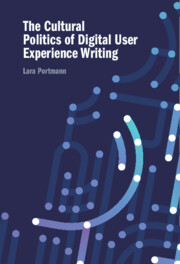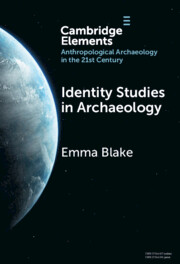Refine search
Actions for selected content:
75 results

The Elixir
- A Posthumanist Approach to Alchemy in Akbarian Sufism and Islam
-
- Published online:
- 30 November 2025
- Print publication:
- 08 January 2026
-
- Element
- Export citation
1 - Introduction
-
-
- Book:
- Being Human in the Digital World
- Published online:
- 11 November 2025
- Print publication:
- 20 November 2025, pp 1-10
-
- Chapter
-
- You have access
- Open access
- HTML
- Export citation
Toward a Posthumanist Understanding of Wartime Suffering: Public Concern for Animal Welfare in Ukraine
-
- Journal:
- Perspectives on Politics , First View
- Published online by Cambridge University Press:
- 20 August 2025, pp. 1-25
-
- Article
- Export citation
10 - Liquid Languages
- from Part III - Theoretical Conclusions
-
- Book:
- Liquid Languages
- Published online:
- 28 July 2025
- Print publication:
- 14 August 2025, pp 227-239
-
- Chapter
- Export citation
2 - Designing Words
- from I - Mapping the Profession: The Language Work of UX Writers
-
- Book:
- The Cultural Politics of Digital User Experience Writing
- Published online:
- 24 July 2025
- Print publication:
- 07 August 2025, pp 29-54
-
- Chapter
- Export citation
7 - The Cultural Politics of the Interface
- from Conclusion
-
- Book:
- The Cultural Politics of Digital User Experience Writing
- Published online:
- 24 July 2025
- Print publication:
- 07 August 2025, pp 161-183
-
- Chapter
- Export citation
1 - The Production, Pragmatics, and Politics of Digital Media
- from Introduction
-
- Book:
- The Cultural Politics of Digital User Experience Writing
- Published online:
- 24 July 2025
- Print publication:
- 07 August 2025, pp 3-26
-
- Chapter
- Export citation

The Cultural Politics of Digital User Experience Writing
-
- Published online:
- 24 July 2025
- Print publication:
- 07 August 2025
Introduction
-
- Book:
- Embodiment in Nineteenth-Century American Literature
- Published online:
- 29 June 2025
- Print publication:
- 17 July 2025, pp 1-25
-
- Chapter
- Export citation
Chapter 9 - Launching into a Brown Future
- from Part II - Transforming Genres
-
-
- Book:
- Latinx Literature in Transition, 1992–2020
- Published online:
- 19 June 2025
- Print publication:
- 03 July 2025, pp 167-184
-
- Chapter
- Export citation

Embodiment in Nineteenth-Century American Literature
-
- Published online:
- 29 June 2025
- Print publication:
- 17 July 2025
Earth’s Love Letters: Locating loving pedagogies
-
- Journal:
- Australian Journal of Environmental Education / Volume 41 / Issue 2 / May 2025
- Published online by Cambridge University Press:
- 23 May 2025, pp. 226-248
-
- Article
-
- You have access
- Open access
- HTML
- Export citation
1 - The Comfort of Screens
-
- Book:
- The Comfort of Screens
- Published online:
- 10 April 2025
- Print publication:
- 17 April 2025, pp 1-25
-
- Chapter
- Export citation
3 - People on Screens
-
- Book:
- The Comfort of Screens
- Published online:
- 10 April 2025
- Print publication:
- 17 April 2025, pp 46-69
-
- Chapter
- Export citation
Music on the move: understanding music as otherwise knowledge in early childhood
-
- Journal:
- British Journal of Music Education , First View
- Published online by Cambridge University Press:
- 02 April 2025, pp. 1-14
-
- Article
-
- You have access
- Open access
- HTML
- Export citation

Identity Studies in Archaeology
-
- Published online:
- 02 December 2024
- Print publication:
- 02 January 2025
-
- Element
- Export citation
An entangled memoryscape: Holocaust memory on social media
- Part of
-
- Journal:
- Memory, Mind & Media / Volume 3 / 2024
- Published online by Cambridge University Press:
- 24 October 2024, e23
-
- Article
-
- You have access
- Open access
- HTML
- Export citation
Planty Childhoods: Theorising with a Vegetal Ontology in Environmental Education Research
-
- Journal:
- Australian Journal of Environmental Education / Volume 40 / Issue 2 / April 2024
- Published online by Cambridge University Press:
- 26 September 2024, pp. 243-257
-
- Article
-
- You have access
- Open access
- HTML
- Export citation
Navigating Approaches to “Thinking With”: A Discussion of the Practicalities of Posthuman Research Involving Young Children
-
- Journal:
- Australian Journal of Environmental Education / Volume 40 / Issue 2 / April 2024
- Published online by Cambridge University Press:
- 26 September 2024, pp. 216-230
-
- Article
-
- You have access
- Open access
- HTML
- Export citation
4 - Linguistic, Semiotic and Sociomaterial Assemblages
-
- Book:
- Language Assemblages
- Published online:
- 20 June 2024
- Print publication:
- 27 June 2024, pp 81-108
-
- Chapter
- Export citation
